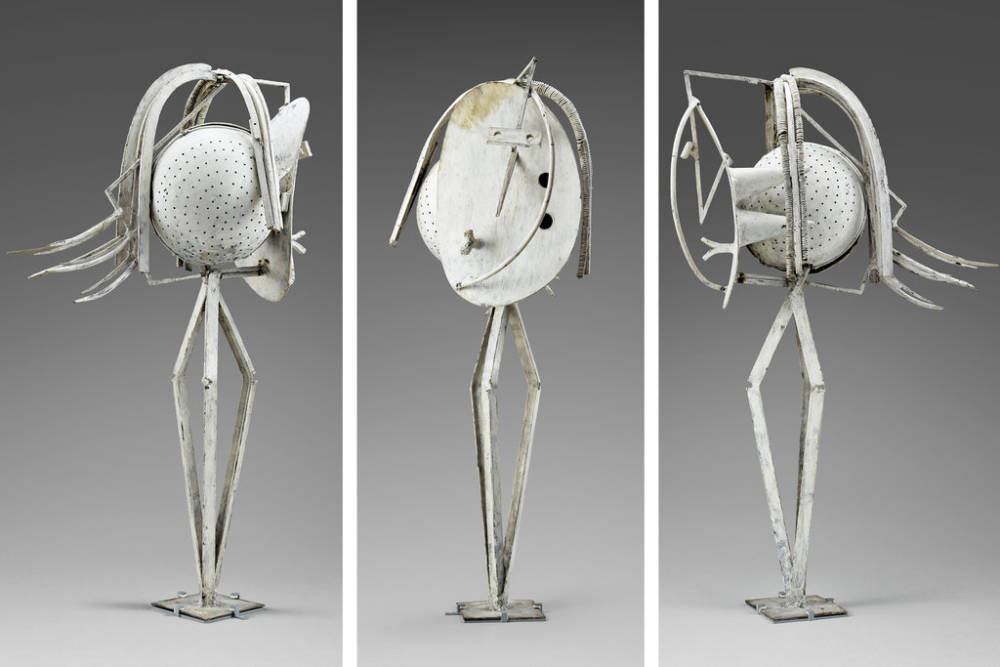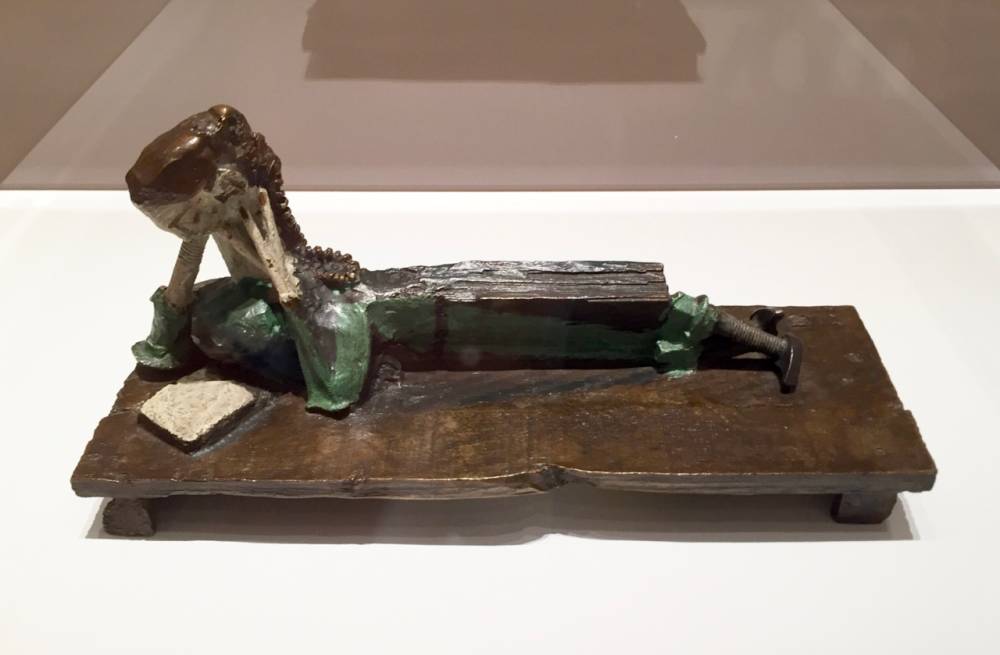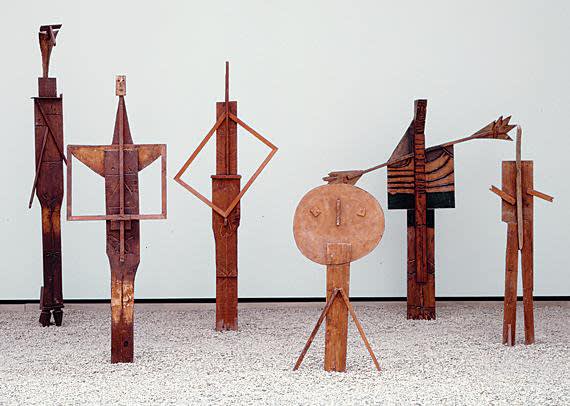Maison Martin Margiela Fall/Winter 2012 Artisanal
Baseball Glove Dress
Pablo Picasso
Bull's Head, 1942
The process of Upcycling refers to the reusing of discarded materials in such a manner as to create a product of higher quality or increased value than the original. This concept has existed for centuries and been embraced by the upper echelon of creative minds. Both Martin Margiela and Pablo Picasso have built significant bodies of work in fashion and art, respectively, masterfully utilizing recycled and reused materials.
From the French fashion house’s inception in 1988, Maison Martin Margiela has been renowned for the deconstructing of garments and their reconstructing using an array of vintage items and repurposed materials. This artful use of reclaiming found objects was always a signature of the house and led to the establishment of Maison Martin Margiela ‘Artisanal’.
The first Artisanal collection was presented for Spring/Summer 2006, offering a revelatory interpretation of traditional haute couture. Each piece of Maison Margiela Artisanal is constructed by hand out of an array of reworked vintage garments, as well as found and discarded materials. Pieces have ranged from tops made of leather gloves for Spring/Summer 2001 – prior to the formal establishment of Artisanal – a cape made of wool hats for Fall/Winter 2004, jackets made from recycled leather belts and sandals for Spring/Summer 2006, and a bowtie dress for Fall/Winter 2006.
Maison Martin Margiela Spring/Summer 2001 Ready-to-Wear
White Glove Top
Maison Martin Margiela Spring/Summer 2001 Ready-to-Wear
Black Glove Top
Maison Martin Margiela Spring/Summer 2006 Artisanal
White Sandal Jacket
Maison Martin Margiela Fall/Winter 2006 Artisanal
Bowtie Dress
Later designs also included a disco ball top, a plastic fur jacket, a suit made of buttons, a trench coat of champagne labels, and dresses made out of old records, hair combs, recycled candy wrappers and baseball gloves. Although Margiela has shown no interest in being recognized as a traditional couturier, the house received the official Haute Couture appellation in 2012 from the Fédération Française de la Couture. Today, creative director John Galliano is keeping the spirit of ‘Artisanal’ alive with his inventive use of repurposed objects and materials within his artful designs.
Maison Martin Margiela Fall/Winter 2008 Artisanal
Record Dress
Maison Martin Margiela Fall/Winter 2008 Artisanal
Disco Ball Top
Maison Martin Margiela Spring/Summer 2009 Artisanal
Comb Dress
Maison Martin Margiela Spring/Summer 2009 Artisanal
Plastic Tag Fur Jacket
Maison Martin Margiela Spring/Summer 2012 Artisanal
Champagne Label Trench Coat
Maison Martin Margiela Spring/Summer 2012 Artisanal
Button Suit
Maison Martin Margiela Fall/Winter 2012 Artisanal
Baseball Glove Dress
Maison Martin Margiela Spring/Summer 2013 Artisanal
Candy Wrapper Dress
From Marcel Duchamp’s ready-mades and Joseph Cornell’s assemblage boxes, to Robert Rauschenberg’s collaged canvases and David Smith’s keen ability to upcycle materials, examples of upcycling in art of the twentieth-century are innumerable, but no single artist can so keenly construct a masterpiece using a few simple objects like Pablo Picasso. The most obvious example in the artist’s expansive oeuvre being “Tête de Taureau” (Bull’s Head) from 1942, made simply from a bicycle seat and handle bars, a complete metamorphosis of common articles from everyday life.
Pablo Picasso
Tête de Taureau, 1942
Pablo Picasso
Baboon and Young, 1951
Countless other treasures of imaginative genius exist throughout the artist’s career, such as “Head of a Woman", where Picasso used metal colanders to form the female figure’s head; “Woman Reading", where the female’s legs and arms are made of screws, her braid out of conduit and her pleated skirt from a piece of wood; “Baboon and Young”, my favorite example, where the artist fashioned the monkey’s head out of a toy car; and “The Bathers”, a group of standing sculptures with painting stretchers serving to mark the figure’s arms. All five of these works and countless others were presented at the Picasso Sculpture show at the Museum of Modern Art in New York City in 2015. A true feast for the eyes and the imagination.

Pablo Picasso
Head of a Woman, 1929-30

Pablo Picasso
Woman Reading, 1951-53



